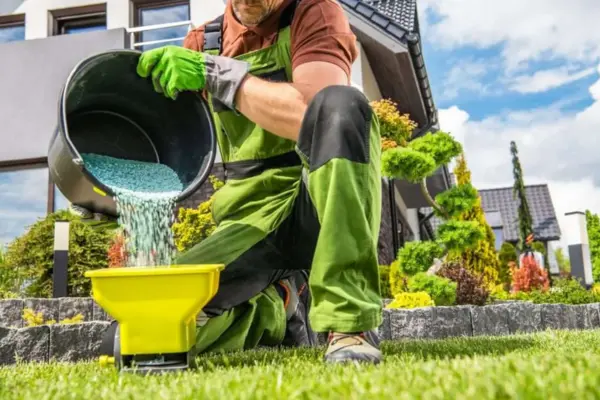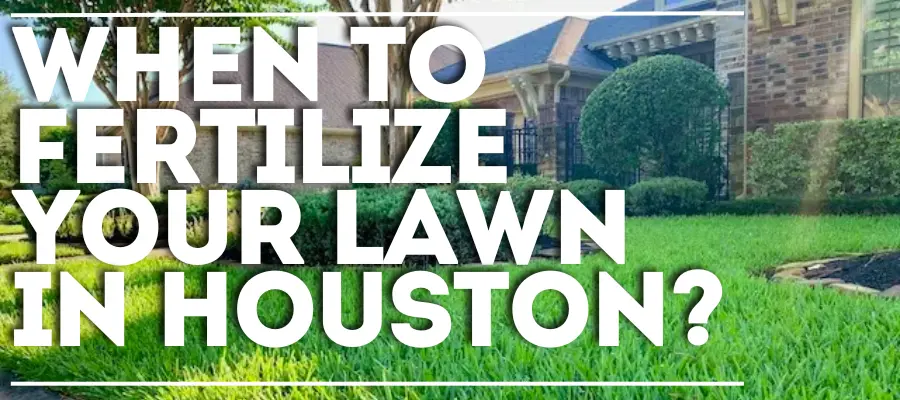Maintaining a vibrant, healthy lawn in Houston requires more than just regular mowing. Fertilization is a crucial aspect of lawn care that can dramatically impact the appearance and health of your grass.
Understanding When to Fertilize Your Lawn in Houston is key to achieving that lush, green lawn you’ve always wanted.
In this article, we’ll explore the best times to fertilize, the types of fertilizers to use, and essential tips for keeping your lawn in top shape year-round.
Understanding Houston’s Climate and Its Impact on Lawn Care

| Season | Temperature Range | Key Considerations |
|---|---|---|
| Spring | 60-80°F (16-27°C) | Begin fertilizing as growth resumes. Apply a balanced fertilizer to stimulate early growth. |
| Summer | 80-95°F (27-35°C) | Increase frequency of fertilization. Use a slow-release fertilizer to provide consistent nutrients. |
| Fall | 65-85°F (18-29°C) | Prepare for winter with a balanced or high-potassium fertilizer to strengthen the lawn. |
| Winter | 50-70°F (10-21°C) | Minimal fertilization, focus on winterizing. Use a light application if necessary to support root health. |
Understanding how Houston’s climate affects grass growth and fertilization needs helps homeowners make informed decisions about when and how to apply fertilizers. This knowledge is crucial for maintaining a healthy and vibrant lawn throughout the year.
When to Fertilize Your Lawn in Houston

Spring Fertilization
When to Start
Timing: The best time to begin fertilizing your lawn in Houston is in late spring, typically from late March to early April. This timing coincides with the grass’s transition from winter dormancy to active growth. As temperatures rise and the soil warms, your lawn starts to emerge from its winter slumber, and a well-timed application of fertilizer can give it a healthy boost.
Fertilizer Type and Application
Balanced Fertilizer: Use a balanced fertilizer with an equal ratio of nitrogen, phosphorus, and potassium (e.g., 10-10-10). This supports overall lawn health, promoting even growth and root development.
Application Rate: Apply at a rate of 1 pound of nitrogen per 1,000 square feet. This encourages vigorous growth without overwhelming the grass with excessive nutrients.
Example Application Schedule
April 1st – April 15th: Apply the first round of fertilizer. This timing allows the grass to take full advantage of the nutrients as it begins its growing season.
Repeat Application: Depending on grass type and growth rate, a second application may be necessary in late May.
Summer Fertilization
When to Continue
Timing: Fertilize your lawn every 6 to 8 weeks during the summer, from late May to early August. This frequent feeding supports the high growth rates experienced in Houston’s hot and humid climate.
Fertilizer Type and Application
Slow-Release Fertilizer: Use a slow-release fertilizer with a higher nitrogen content (e.g., 20-5-10). Slow-release formulas provide a steady supply of nutrients over time, reducing the risk of nutrient runoff and minimizing the frequency of applications.
Application Rate: Continue applying at a rate of 1 pound of nitrogen per 1,000 square feet, adjusting based on lawn response and weather conditions.
Example Application Schedule
June 1st: Apply the first summer fertilizer. This helps the lawn handle the peak summer heat.
August 1st: Apply a second round to sustain growth as temperatures begin to ease.
Fall Fertilization
When to Prepare for Winter
Timing: Fertilize your lawn in early to mid-fall, typically from late September to mid-October. This timing helps your grass prepare for the winter months and promotes strong root development.
Fertilizer Type and Application
High-Potassium Fertilizer: Use a fertilizer with higher potassium levels (e.g., 10-10-20). Potassium strengthens grass against cold temperatures and disease.
Application Rate: Apply at a rate of 1 pound of nitrogen per 1,000 square feet, similar to spring and summer applications.
Example Application Schedule
October 1st – October 15th: Apply the fall fertilizer to ensure the lawn is well-prepared for winter dormancy.
Optional Late Fall Application: If the lawn shows signs of stress or if you want to provide extra nutrients, a light application in November can be beneficial.
Winter Fertilization
When to Winterize
Timing: Winter fertilization is minimal but can be beneficial if the lawn remains active. Typically, this involves light applications in late February to early March, just before the growing season begins again.
Fertilizer Type and Application
Low-Nitrogen Fertilizer: Use a low-nitrogen formula or a specialized winterizer fertilizer designed to support root health without encouraging excessive top growth.
Application Rate: Apply a reduced rate, such as 0.5 pounds of nitrogen per 1,000 square feet.
Example Application Schedule
Late February: Apply a winterizer to support the lawn’s transition from dormancy to active growth.
Conclusion: When to Fertilize Your Lawn in Houston
Knowing when to fertilize your lawn in Houston is crucial for maintaining a healthy and beautiful lawn. By understanding Houston’s unique climate and following a well-timed fertilization schedule, you can ensure your grass remains lush and green throughout the year. Remember to choose the right fertilizers for your grass type, avoid common mistakes, and incorporate additional lawn care practices like aeration and soil testing. With these strategies, your Houston lawn will thrive, making your outdoor space a standout feature of your home.

